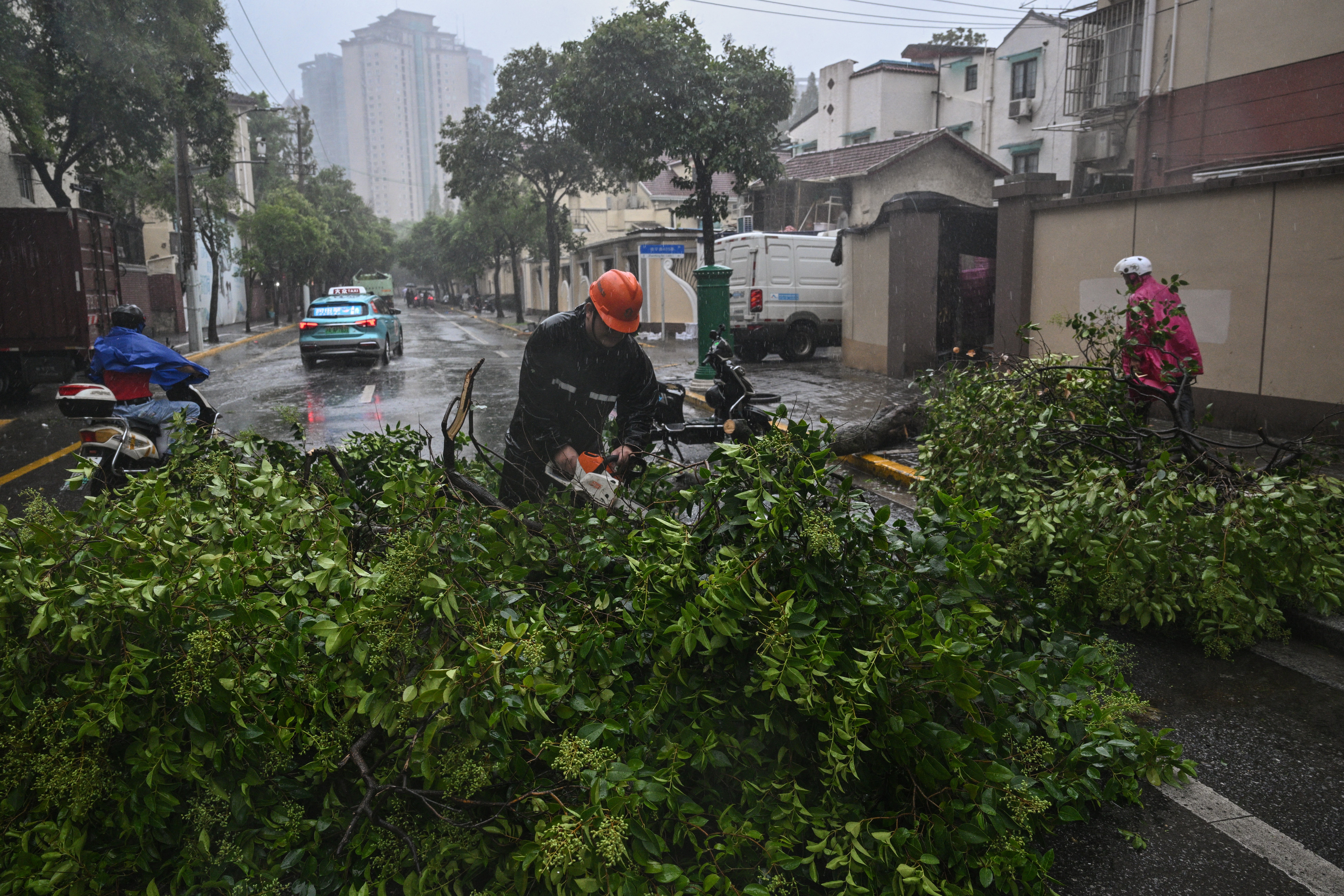Mapped: Typhoon Bebinca, strongest storm to hit Shanghai in 75 years, weakens but set to bring more rain
Chinese city of 25 million is rarely in the direct path of typhoons
Your support helps us to tell the story
From reproductive rights to climate change to Big Tech, The Independent is on the ground when the story is developing. Whether it's investigating the financials of Elon Musk's pro-Trump PAC or producing our latest documentary, 'The A Word', which shines a light on the American women fighting for reproductive rights, we know how important it is to parse out the facts from the messaging.
At such a critical moment in US history, we need reporters on the ground. Your donation allows us to keep sending journalists to speak to both sides of the story.
The Independent is trusted by Americans across the entire political spectrum. And unlike many other quality news outlets, we choose not to lock Americans out of our reporting and analysis with paywalls. We believe quality journalism should be available to everyone, paid for by those who can afford it.
Your support makes all the difference.Typhoon Bebinca, the strongest storm to directly hit Shanghai since 1949, made landfall on Monday morning, bringing the city to a standstill.
The storm hit Shanghai’s Pudong district, an industrial area southeast of the city’s core, at around 7.30am local time, with wind speeds of up to 151 kmph, according to the China Meteorological Administration.
The Joint Typhoon Warning Center classified Bebinca as a Category 1 Atlantic hurricane equivalent.
Bebinca formed late on Saturday and intensified quickly before slamming into Shanghai, a city of 25 million people that is rarely in the direct path of typhoons.
Hundreds of flights and ferries were cancelled and highways closed from Sunday afternoon as the financial capital prepared for the storm.
An elderly man was injured by a falling tree and over 414,000 people were evacuated to shelters amid a red typhoon warning, China’s highest alert level.
The storm uprooted over 10,000 trees, flooded major roads, and damaged farmland.
After making landfall, Bebinca weakened and moved westward into Jiangsu, Anhui, and Zhejiang provinces. By Monday afternoon, it was moving inland as a severe tropical storm at a speed of 20 kmph.

In spite of weakening, the storm was expected to cause heavy rain, with up to 30 centimetres forecast in some places through Wednesday.
Although it was expected to weaken further on its inland journey and dissipate, the risk of torrential rain and flooding remained high, particularly in low-lying areas.
“The greater impact of the typhoon might come after landfall,” Tang Jie, deputy head of the Shanghai Typhoon Institute, was quoted as saying by Xinhua news agency, adding that wind and rainfall would intensify Monday night.

Bebinca's arrival coincided with China’s three-day mid-autumn festival, disrupting travel and holiday plans for millions of people.
As many as 1,600 flights were cancelled in Shanghai and neighbouring regions, nearly 1,400 of them at Shanghai’s two international airports alone.
Train services were suspended, ports were closed, and major highways were shut down as authorities scrambled to mitigate the storm’s impact.
Pictures and videos posted on social media showed scenes of destruction across the city and there were many reports of power and water outages.
The typhoon caused significant damage to infrastructure, knocking out power to at least 380 households in Shanghai.
Nearly 56,000 rescue workers and 12,000 firefighters were deployed to deal with the aftermath as the storm subsided.
Bebinca was the second major storm to strike China this month after Super Typhoon Yagi, which made landfall in the southern province of Hainan on 6 September, killing four people on the island. Yagi also left hundreds of people dead in Vietnam and the Philippines.
Scientists say that warmer ocean waters due to the climate crisis are making tropical storms more intense and frequent.

Join our commenting forum
Join thought-provoking conversations, follow other Independent readers and see their replies
Comments